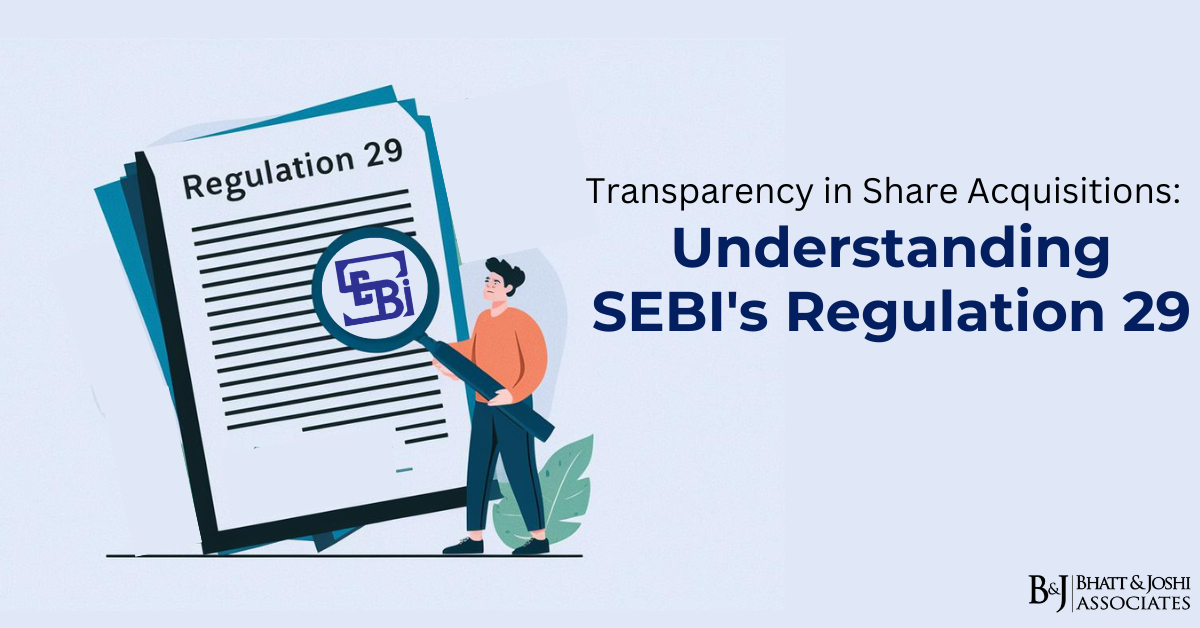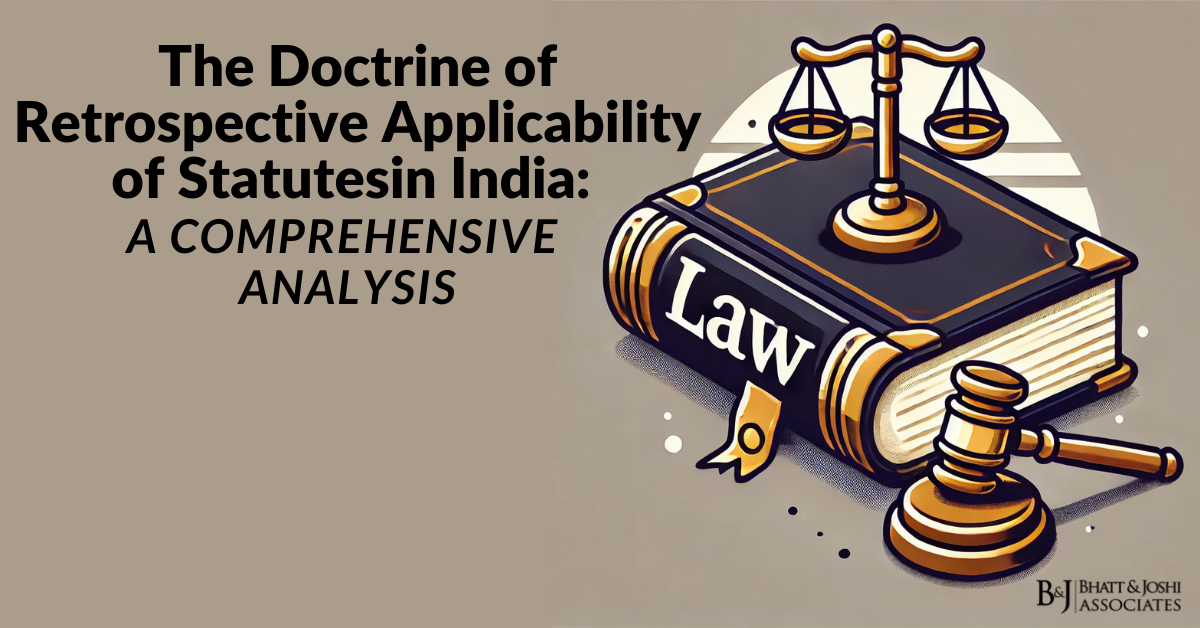Introduction
In the dynamic world of corporate finance and stock market operations, transparency is paramount. The Securities and Exchange Board of India (SEBI) has established a comprehensive framework to ensure that all stakeholders in the securities market have access to critical information about significant changes in company ownership. At the heart of this framework lies Regulation 29 of the SEBI (Substantial Acquisition of Shares and Takeovers) Regulations, 2011.
Scope of the Article
This article delves into the intricacies of Regulation 29, exploring its purpose, key provisions, and implications for investors and companies alike. By understanding these regulations, market participants can better navigate the complexities of share acquisitions and disposals, ensuring compliance with regulatory standards and contributing to the overall integrity of the Indian securities market.
Objectives of Regulation 29 of SEBI
Regulation 29 serves as a cornerstone in SEBI’s efforts to promote transparency and protect investor interests. Its primary objectives include:
- Ensuring timely disclosure of significant changes in company ownership
- Preventing market manipulation through undisclosed accumulation of shares
- Providing investors with crucial information to make informed decisions
- Maintaining a level playing field for all market participants
By mandating detailed disclosures for substantial acquisitions and disposals of shares, Regulation 29 helps create a more transparent and efficient market ecosystem.
Key Provisions of Regulation 29 of SEBI
Regulation 29 outlines specific scenarios under which disclosures are required. Let’s examine these provisions in detail:
Initial Acquisition Threshold
Under Regulation 29(1), any acquirer, either individually or acting in concert with others, must disclose their aggregate shareholding and voting rights when their total holdings reach or exceed 5% of the target company’s shares. This initial disclosure serves as a baseline for future reporting requirements. It’s worth noting that for companies listed on the Innovators Growth Platform, the threshold is set at 10% instead of 5%. This distinction recognizes the unique characteristics of companies in this segment and provides some flexibility in reporting requirements.
Subsequent Changes in Shareholding
Regulation 29(2) addresses situations where an entity already holds 5% or more of a company’s shares or voting rights. In such cases, any change in shareholding must be disclosed if:
- The change results in the shareholding falling below 5%, or
- The change exceeds 2% of the total shareholding or voting rights in the target company
Again, for companies on the Innovators Growth Platform, these thresholds are adjusted to 10% and 5%, respectively.
Timeframe for Disclosures
Regulation 29(3) stipulates that all required disclosures must be made within two working days of:
- Receiving intimation of share allotment
- The acquisition or disposal of shares or voting rights
These disclosures must be submitted to both the target company and the stock exchange where the company’s shares are listed. It’s important to note that the responsibility for making these disclosures lies solely with the acquirer, and the target company cannot make these disclosures on the acquirer’s behalf.
Treatment of Encumbrances
Regulation 29(4) addresses the treatment of shares held as encumbrances. When shares are taken by way of encumbrance, it is considered an acquisition for disclosure purposes. Conversely, when shares already held as encumbrances are released, it is treated as a disposal. However, there are exceptions to this rule. Scheduled commercial banks, public financial institutions, housing finance companies, and systemically important non-banking financial companies are exempt from this requirement when acting as pledgees in connection with securing indebtedness in the ordinary course of business.
Disclosure Formats and Requirements
To ensure uniformity and clarity in disclosures, SEBI has provided specific formats for reporting under Regulation 29. These formats, known as Annexure A and Annexure B, require detailed information about the acquisition or disposal of shares.
Annexure A: Format for Disclosures under Regulation 29(1)
This format is used for initial disclosures when an acquirer’s shareholding reaches or exceeds the 5% threshold. Key information required includes:
- Details of the target company and acquirer
- Names of stock exchanges where the target company’s shares are listed
- Pre-acquisition shareholding details
- Acquisition details
- Post-acquisition shareholding details
- Mode of acquisition
- Date of acquisition or receipt of intimation
- Equity share capital details before and after the acquisition
Annexure B: Format for Disclosures under Regulation 29(2)
This format is used for subsequent disclosures when there are changes in shareholding above the specified thresholds. It requires similar information to Annexure A, but with additional details on the disposal of shares, if applicable. Both formats require the acquirer to provide their PAN (Permanent Account Number) and specify whether they belong to the promoter or promoter group. This information helps regulators and other stakeholders better understand the nature of the transaction and its potential impact on the company’s ownership structure.
Implications for Market Participants
Regulation 29 has far-reaching implications for various market participants:
Acquirers and Investors
For individuals or entities looking to acquire substantial stakes in listed companies, Regulation 29 mandates careful tracking of their shareholding. They must be prepared to make timely disclosures as their ownership levels approach or cross the specified thresholds. This requirement applies not only to direct share purchases but also to acquisitions through convertible instruments, warrants, or other securities that may result in future share ownership.
Investors must also be aware that even seemingly small changes in their shareholding can trigger disclosure requirements if they already hold a significant stake in the company. This necessitates a proactive approach to compliance and careful planning of investment strategies.
Target Companies
While the primary responsibility for making disclosures lies with the acquirer, target companies play a crucial role in the process. They must ensure that they have systems in place to receive and process these disclosures promptly. Companies should also be prepared to answer questions from other shareholders or market analysts regarding significant changes in their ownership structure.
Stock Exchanges and Regulators
Stock exchanges serve as the primary recipients of disclosures under Regulation 29. They must have robust systems to receive, verify, and disseminate this information to the broader market. Regulators, including SEBI, use these disclosures to monitor market trends, detect potential irregularities, and ensure overall market integrity.
Other Shareholders and Market Analysts
For existing shareholders and market analysts, disclosures made under Regulation 29 provide valuable insights into a company’s ownership dynamics. This information can influence investment decisions, as significant changes in ownership may signal potential shifts in company strategy or control.
Challenges and Considerations for Regulation 29 of SEBI
While Regulation 29 plays a crucial role in promoting market transparency, its implementation is not without challenges:
Determining Concert Party Relationships
One of the complexities in complying with Regulation 29 lies in determining when parties are acting in concert. This concept extends beyond formal agreements and can include informal understandings or relationships that result in coordinated acquisition strategies. Acquirers must carefully assess their relationships with other investors to ensure compliance with disclosure requirements.
Calculating Shareholding Percentages
Accurate calculation of shareholding percentages is essential for compliance. This can be challenging, particularly when dealing with convertible instruments or complex corporate structures. Companies and investors must have robust systems in place to track their effective ownership levels continuously.
Timing of Disclosures
The two-working-day window for making disclosures can be challenging, especially for large institutions or international investors. Entities must have efficient internal processes to ensure they can gather the necessary information and submit disclosures within the stipulated timeframe.
Cross-Border Considerations
For multinational corporations or foreign investors, complying with Regulation 29 may require coordination across different jurisdictions. They must ensure that their global investment activities are monitored and reported in accordance with Indian regulations.
Dealing with Indirect Acquisitions
In some cases, share acquisitions may occur indirectly through the purchase of holding companies or other intermediate entities. Determining when such transactions trigger disclosure requirements under Regulation 29 can be complex and may require careful legal analysis.
Best Practices for Compliance
To ensure smooth compliance with Regulation 29, market participants should consider the following best practices:
Implement Robust Monitoring Systems
Companies and large investors should implement automated systems to track their shareholdings and alert relevant personnel when disclosure thresholds are approached.
Establish Clear Internal Processes
Develop clear internal processes for gathering required information, preparing disclosures, and submitting them to the appropriate authorities within the mandated timeframe.
Conduct Regular Training
Ensure that all relevant employees are trained on the requirements of Regulation 29 and understand their role in the compliance process.
Seek Expert Advice
When dealing with complex scenarios or uncertainties, don’t hesitate to seek advice from legal experts or regulatory consultants.
Maintain Detailed Records
Keep comprehensive records of all share transactions, including the rationale behind them, to facilitate any future inquiries or audits.
Stay Informed About Regulatory Changes
Regularly monitor for updates or amendments to Regulation 29 and other relevant SEBI regulations to ensure ongoing compliance.
The Broader Context: Market Integrity and Investor Protection
Regulation 29 is part of a broader regulatory framework designed to ensure the integrity of India’s securities markets. By mandating transparency in significant share transactions, SEBI aims to:
- Prevent insider trading and market manipulation
- Protect minority shareholders’ interests
- Facilitate fair price discovery in the market
- Enhance overall investor confidence in the Indian stock market
These objectives align with global best practices in securities regulation and contribute to India’s standing as an attractive destination for both domestic and international investment.
Future Outlook for Regulation 29 of SEBI
As India’s capital markets continue to evolve, regulations like Regulation 29 will likely undergo further refinement. Potential areas for future development might include:
- Integration with technology platforms for real-time disclosure processing
- Harmonization with international standards to facilitate cross-border investments
- Adjustments to thresholds or timelines based on market feedback and changing dynamics
- Enhanced provisions for disclosure of beneficial ownership, particularly in light of complex corporate structures
Conclusion
Regulation 29 of the SEBI (Substantial Acquisition of Shares and Takeovers) Regulations, 2011, stands as a critical pillar in India’s securities market regulatory framework. Mandating timely and detailed disclosures of significant changes in company ownership, plays a vital role in maintaining market transparency and protecting investor interests. For acquirers and investors, compliance with Regulation 29 is not merely a legal obligation but a fundamental aspect of responsible market participation. It requires careful planning, robust systems, and a commitment to transparency. Target companies, while not directly responsible for making disclosures, must be prepared to handle the implications of ownership changes and respond to stakeholder inquiries. Stock exchanges and regulators rely on these disclosures to monitor market trends and ensure overall market integrity. As India’s capital markets continue to grow and attract global investment, the importance of regulations like Regulation 29 cannot be overstated. They provide the foundation for a fair, efficient, and trustworthy market ecosystem, ultimately benefiting all participants and contributing to the nation’s economic growth. By understanding and adhering to the provisions of Regulation 29, market participants not only ensure legal compliance but also contribute to the broader goals of market transparency and investor protection. In doing so, they play a crucial role in maintaining the health and integrity of India’s dynamic and growing securities market.














